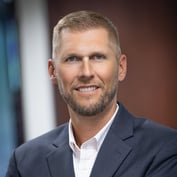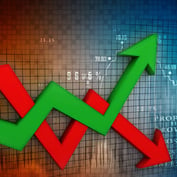Quick Take: Independent investment counselor Marc Heilweil has been managing money since 1977, primarily for clients who have a minimum of $2 million to invest. In late March 2000, Heilweil opted to bring his eclectic, contrarian style to the mutual fund-owning masses by launching the Marathon Value Portfolio (MVPFX). The fund, with just $19.75 million in assets, is classified as a large-cap blend portfolio by Standard & Poor’s.
Marathon Value typically holds between 70 and 75 equities, plus a scattering of short-term fixed-income issues in lieu of cash to reduce volatility. The fund’s three-year standard deviation — a measure of volatility — is 9.91, versus 12.98 for the average large-cap blend fund. Its expense ratio is 1.25%, compared to 1.04% for its peers.
So far, the fund has been easy on the downside, losing less than its peers. For example, in calendar 2002 a down market, it shed 11.0%, versus a loss of 22.2% for the average large-cap blend fund, and 22.1% for the S&P 500. For the three years ended August 31, Marathon Value registered an average annualized return of 13.8%, versus 10.6% for its peers, and 12.0% for the S&P 500. Given the portfolio’s superior risk-adjusted returns, it is ranked 5 Stars by Standard & Poor’s.
As of Sept. 30, 2005, the fund’s top holdings were Pharmaceutical Product Development (PPDI), 2.5%; IBM (IBM), 2.1%; Sasol Ltd ADR (SSL). 2.0%; Kimberly-Clark (KMB), 2.0; and Mitsubishi Tokyo Financial ADR (2.0%). Its top sectors were financials (13.6%), consumer discretionary (12.0%), health care (11.4%), technology (10.8%), and industrials (10.8%).
The Full Interview:
S&P: How would you describe your investment philosophy on the fund?
HEILWEIL: It’s designed to be a one-size-fits-all fund for people who do not want to decide whether to buy small- or large-cap, or value or growth, stocks. We try to buy from all categories, including some international. We attempt to get the best values within all sectors of the equity markets.
It’s a contrarian, longer-term approach — fundamentally based, but not formulaic. I will go where I think the best values lie, regardless of particular indicators.
S&P: Tell me about your process of finding stocks. What’s your universe?
HEILWEIL: My universe is the world. I’ve been managing money full-time since 1977 and have built up a large knowledge base about companies. I have three financial analysts behind me, and one of them does financial models, though I am not model-driven or very concerned with short-term dynamics. I’m personally managing the fund and doing all the stock selection and trading.
I combine a qualitative outlook toward companies with a price discipline. I’m not following the stocks as stocks, but as a “business buyer.” I occasionally buy bad businesses at the right price, but most of my companies are those that I’ve screened for their business strategy and fundamentals and management quality. I usually like to follow the company for a while before I buy it.
As long as management continues to execute and the stock doesn’t become a “market darling,” I will hold those stocks. Sometimes, I will react to bad news and quickly give up on a company. But usually we sell only if a stock becomes a market darling and is overvalued relative to that company’s normal P/E. For example, although the fundamentals for energy are very good, we’re looking at our energy holdings more carefully now because valuations are starting to warn of cyclicality in the business.
S&P: Can you name a company that you bought in the face of bad news?
HEILWEIL: I added to our IBM shares after it had an earnings disappointment in the first quarter of 2005. The stock is now a large holding (2.11% of assets, as of Sept. 30, 2005). I’ve followed IBM for many years, and think their consulting business, the largest part of their business, is slowly coming back to life. They’ve done a good job of getting out of commodities. What’s interesting about IBM is that, as opposed to just being a body shop, they can keep their consultants busy, moving them over to work on technology and software when things slow down.
S&P: How are the fund’s assets typically allocated?
HEILWEIL: Historically we’ve had about 10% to 15% in cash or cash equivalents. If the market fell apart I would use that cash and go to a more traditional 4% level. Our prospectus allows us 10% foreign equities by cost. We’re about 12% international now.
S&P: So typically you have 80%-85% total equities?
HEILWEIL: Yes. We invest most of our cash in fixed income and manage it aggressively to pick up a little more yield. We don’t use money markets, but asset-backed securities on triple-A mortgages and other short-term bonds, like step-up agencies.
We’re not trying to be a balanced fund, but to be less volatile than the typical fund. Occasionally we’ll buy an undervalued bond with equitylike returns to boost returns. We have about 2% of assets in bonds bought for investment purposes.
The asset-backs turn over about every three months. Because of the tranches they’re in, they’re the first to pay off. Our actual stock turnover is only 20%.
S&P: Are there any areas or sectors that you avoid?








 October 11, 2005 at 08:00 PM
October 11, 2005 at 08:00 PM










